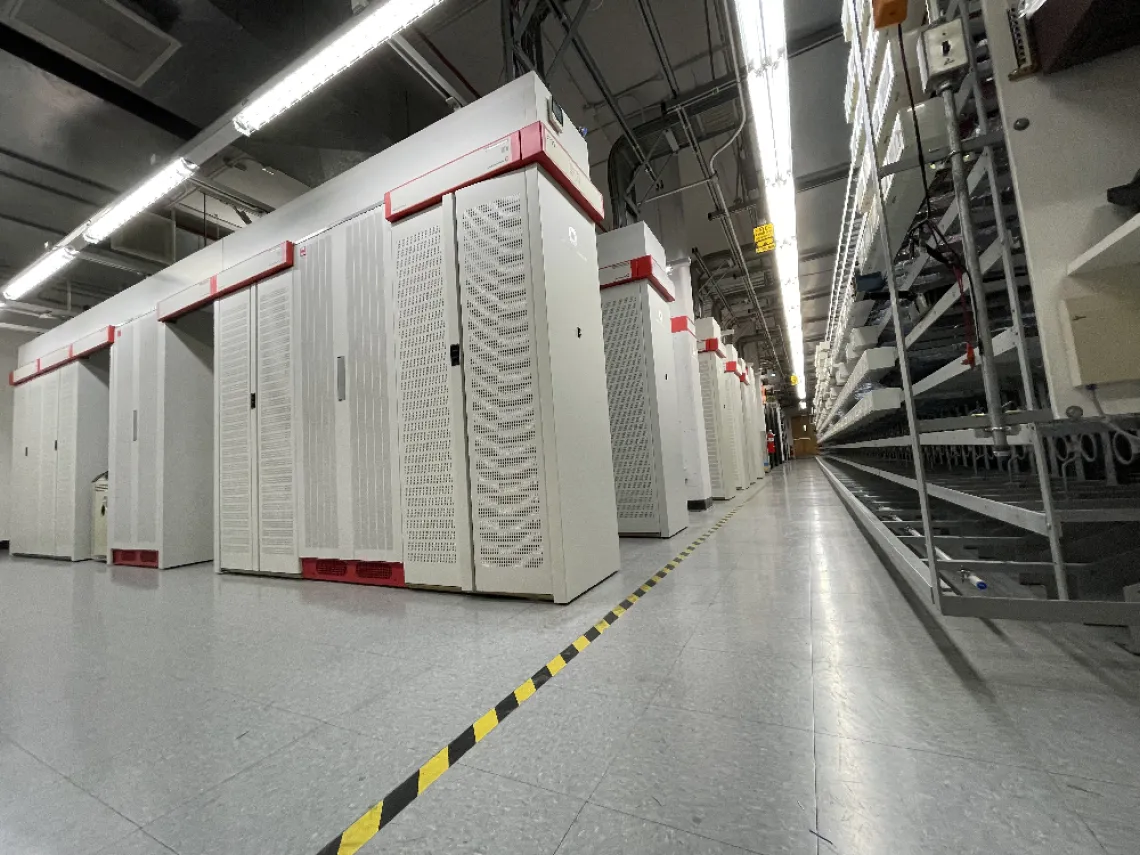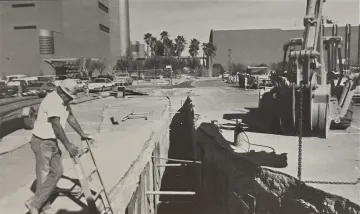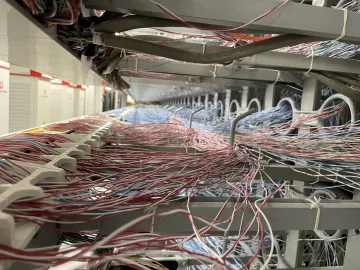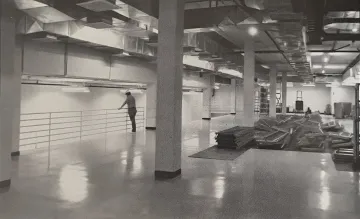The End of An Era in Telecommunications

The Number 5 Electronic Switching System (#5ESS) was the workhorse of the Public Switched Telephone Network (PSTN) in the United States. It was developed in 1982 by Western Electric which was part of the AT&T and original Bell System prior to its breakup. The University of Arizona was quick to jump onboard as one of the first private switch owners to take advantage of emerging technologies in 1989.
Dubbed as the University’s Telecommunications Improvement Project Services (TIPS), change began with a plan to modernize the aging 4-node PBX system that was generally designed as a branch exchange for a single building or small campus. This was an advanced move by the University’s technology leadership and was innovative in their foresight for where telephony was headed and in preparing for the sheer growth of the university that would soon to come.
As part of TIPS, an idea to add fiber cable became a topic that, pre-Ethernet and pre-Internet, led to tough conversations. Chris McCotter, Assistant Director of Field Operations, remembers former CCIT employees that were part of the project relaying the difficult conversations with leadership as telecom staff urged the massive TIPS upgrade to include fiberoptic cable. The cost of the new #5ESS switching system, trenching and entirely new cabling infrastructure in every building across campus made the expense far exceed anything financially realistic at the time. According to McCotter, “It was very difficult trying to convince them on something that folks didn’t know whether we’d use or not, and even what it would be used for when we did use it.” In the end a loan was taken out to cover the cost of the TIPS project including a backbone framework of fiber.
$25 million was paid for the TIPS in 1989 - What did the University get for the $25 million cost of TIPS? A new digital telephone system (#5ESS); a new building, a new conduit system, a new telephone wiring system, a new low speed data communications wiring plant, medium-speed data switching through the new telephone switch, and a new fiber optic cable system.

Massive construction included digging trenches for cable backbone.
This foresight and courage to see beyond the technology horizon was what placed the University at the forefront of the digital age and data networking technologies that didn’t yet exist. When other institutions were still trying to install fiber backbones, the University of Arizona was ready to move into the era of the Internet. “We had the right fiber, and we already had it in the ground,” said McCotter. He continued, “As all the other schools were scrambling, we got a head start planning the Ethernet WAN out. It took a year to design it and a year to turn around and implement it. That was a good feeling.”
The #5ESS switching system was purchased and planning began in 1988 with construction taking place in 1989. The system went live in February 1990. (Follow the TIPS month by month through well-documented Telecom News newsletters that were used inform campus about the project). Very few agencies were running such an extreme telecommunication switching system on their premises at that time. “Considering the magnitude of what was needed to serve, and the reliability that was wanted, it was right to invest in it. A lot of peer schools followed our move years later. It was a carrier-rated system that allowed the university to serve up to 22,000 telephone lines at full port assignment,” said McCotter. A single #5ESS can be equipped to serve up to 500,000 lines.

22,000 telephone lines connected at full port assignment. #5ESS Total capacity 500,000 lines
McCotter explains, “The room itself in building 73a was developed to the exact same standards that a carrier’s central office was built. Where we have redundancy upon redundancy on a whole bunch of things, even the concrete is rated to a certain PSI level and is ground to a certain flatness. You can tell where the entire run of metal racking had to be placed, and that couldn’t be installed on uneven concrete.”

Concrete flooring where the switch equipment would be located.
Chris McCotter and Brian Edwards, Communication Network Analyst, have been helping manage the telecom switching system from 1996 & 1998 respectively. When asked about training opportunities for an early adopter of such technology, each of them holds 14 successive certifications on the Lucent #5ESS. They recall being sent across the country for very specific training in Florida for several weeks at one of only two manufacturer Master Training Centers. Chino Galaz, Communications Network Engineer Principal, is also experienced with the #5ESS system. He has been with the team for 12 years, helping to keep the record 12,542 days of up time going strong.
12,542 days up time = 301,008 hours or 34 years.
Diligence to training and a passion for excellence has paid off as these technicians have kept the system alive long after others have moved away from the #5ESS technology.
Galaz is forthright in explaining, the #5ESS is at its end-stage. He stated, “that's the reason why we had to move on. It's been on a maintenance contract, but there's nobody out there that's able to manage that type of system anymore. No replacement parts for it. Every 4 years we perform an RFP for maintenance support, but we're losing more and more vendors that are willing to provide support for even just the past year.”

As newer technologies become available, all too often seen the old technology gets replaced and lost in history. Over the past decade, the University has moved off the older #5ESS system in favor of Voice-over-Internet-Protocol (VoIP). What once served over 22,000 individual University telephone customers, (mostly analog), been strategically reduced to zero. The University was its own private telecom service provider including extending voice services to far reaching locations like the Campus Agricultural Center on North Campbell Ave. and the Mount Graham International Observatory.
Since late 2023, the VoIP telecom system has been moved to the Zoom Phone platform. Galaz confides that there was discussion to replace the Cisco VoIP and #5ESS telecom system prior to the pandemic, but when University staff began working remotely, telecom needs shifted to match the new remote environment. The Zoom Phone platform met the institution’s demands very effectively. With the Zoom Phone implementation now complete, the inevitable decommissioning of the #5ESS system has been scheduled to take place for June 2024. After serving the University for over three decades, the racks will be extracted from their location deep in the first-floor communications room and taken to be preserved as vintage technology for a telecommunication history museum in northern Arizona. It is rare to find a unit in such superb conditions today. Galaz explains, “the #5ESS is an era of technology worth saving.”
2002 - #E5ESS Modernization was first in the world to update the Communications Module from CM2 version to CM3 version in a production switch. McCotter explains, “It’s like switching out your car engine out as you’re driving down the highway at 65 mph.”

